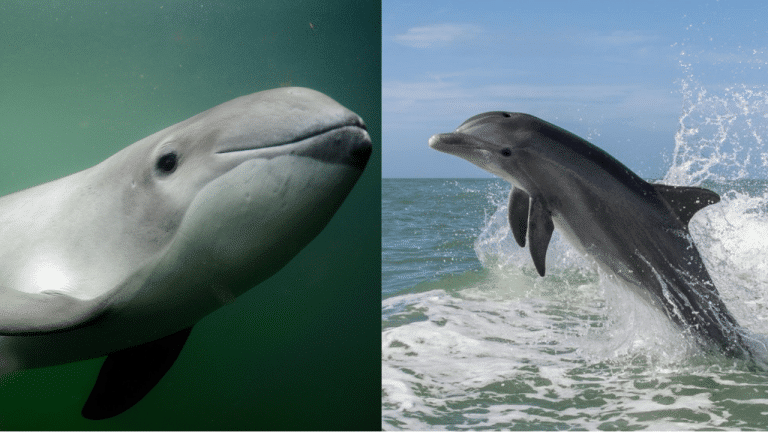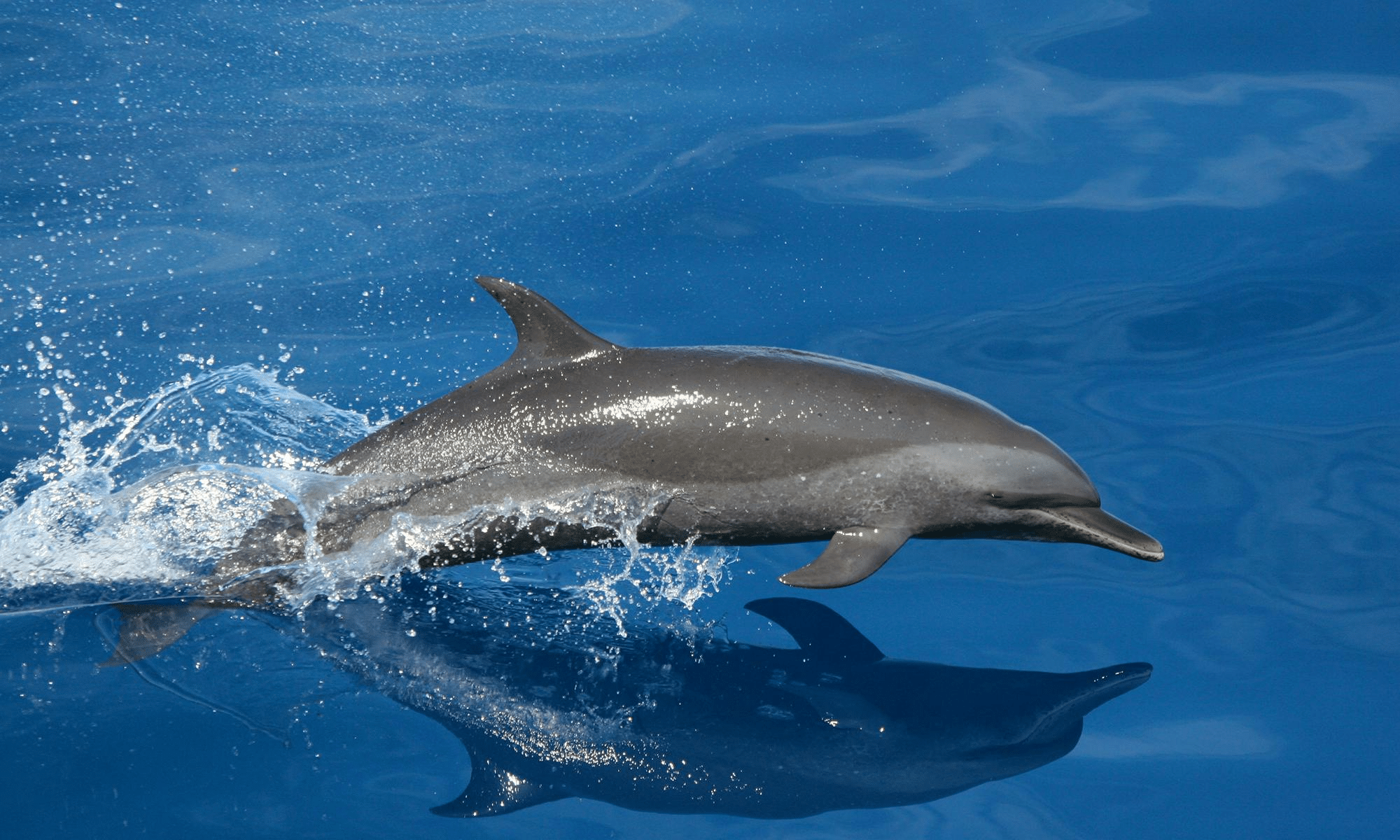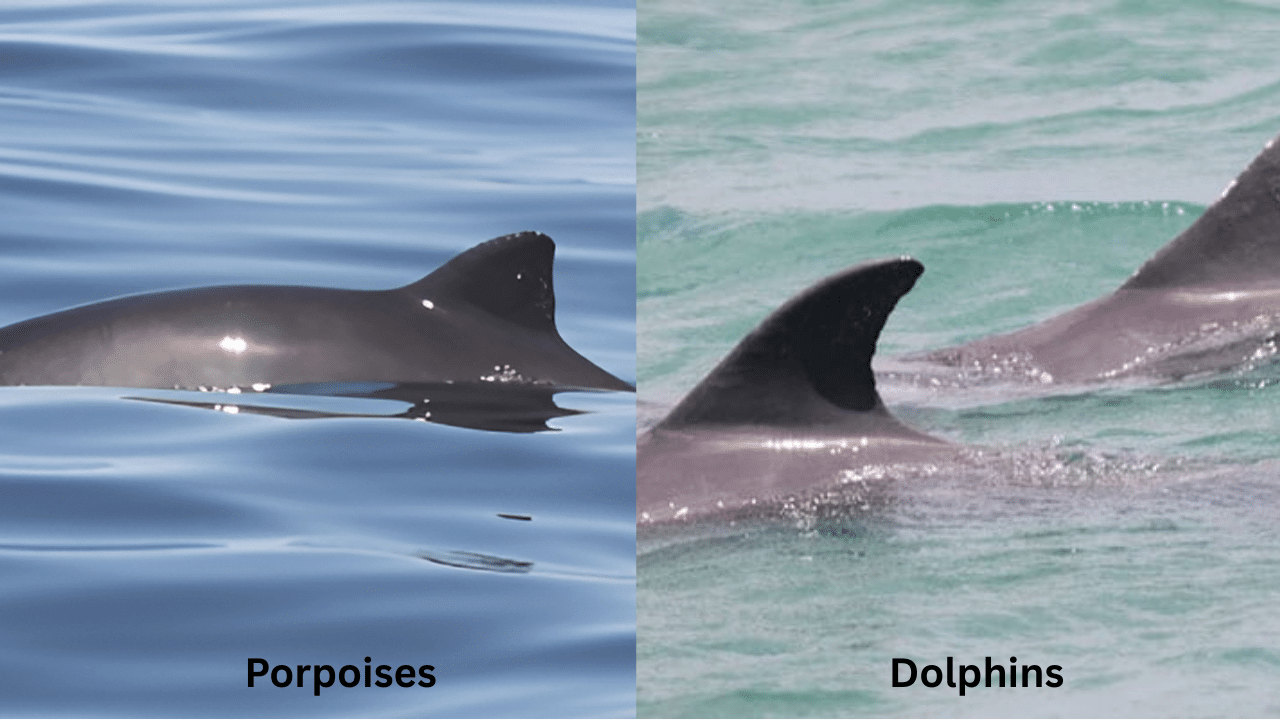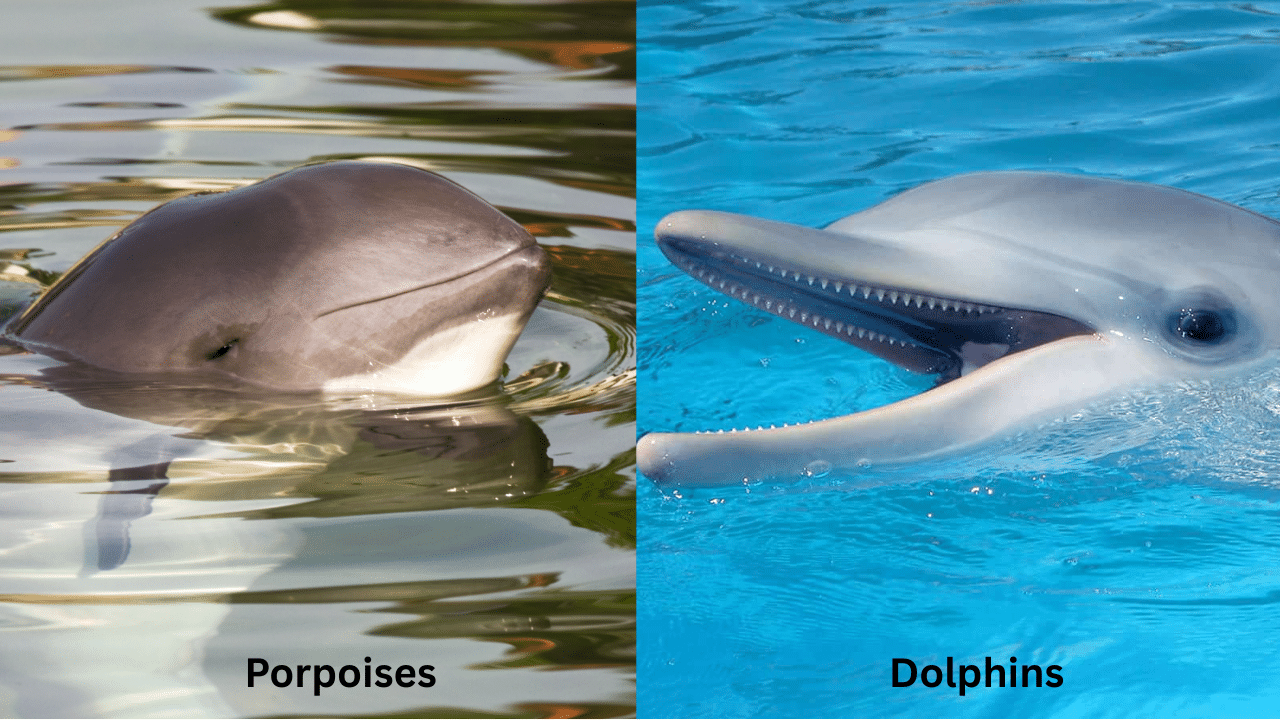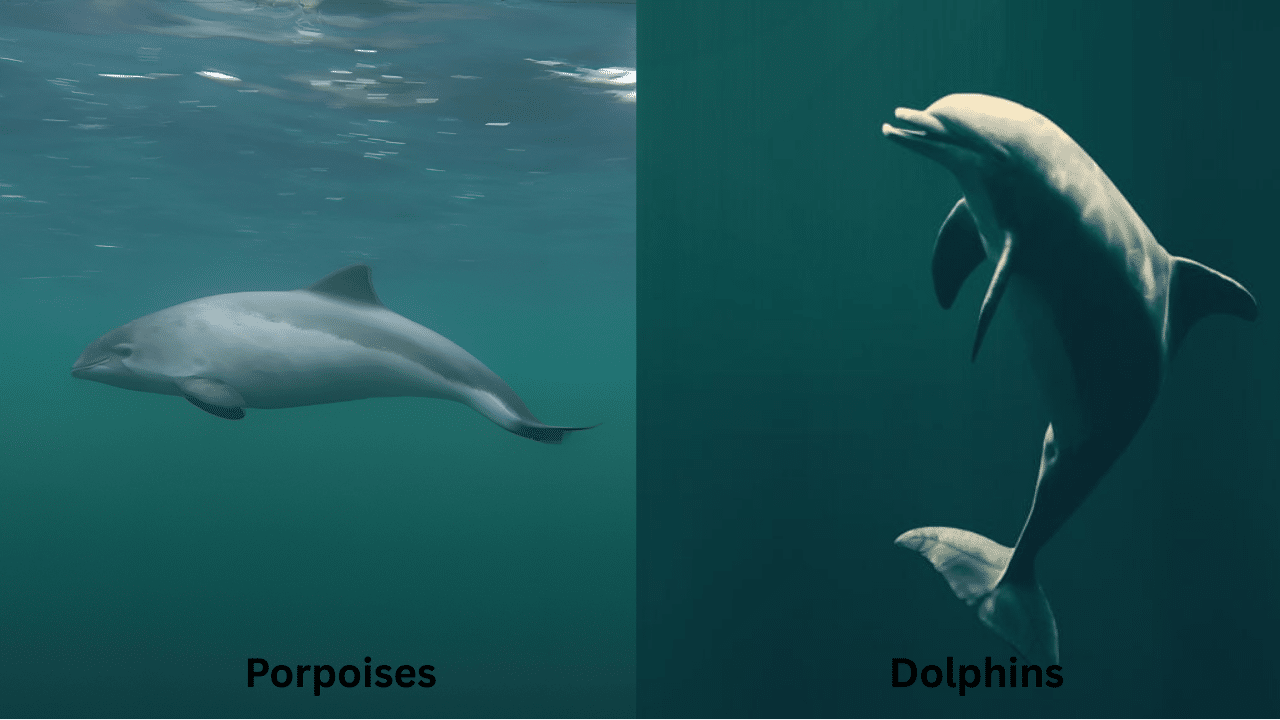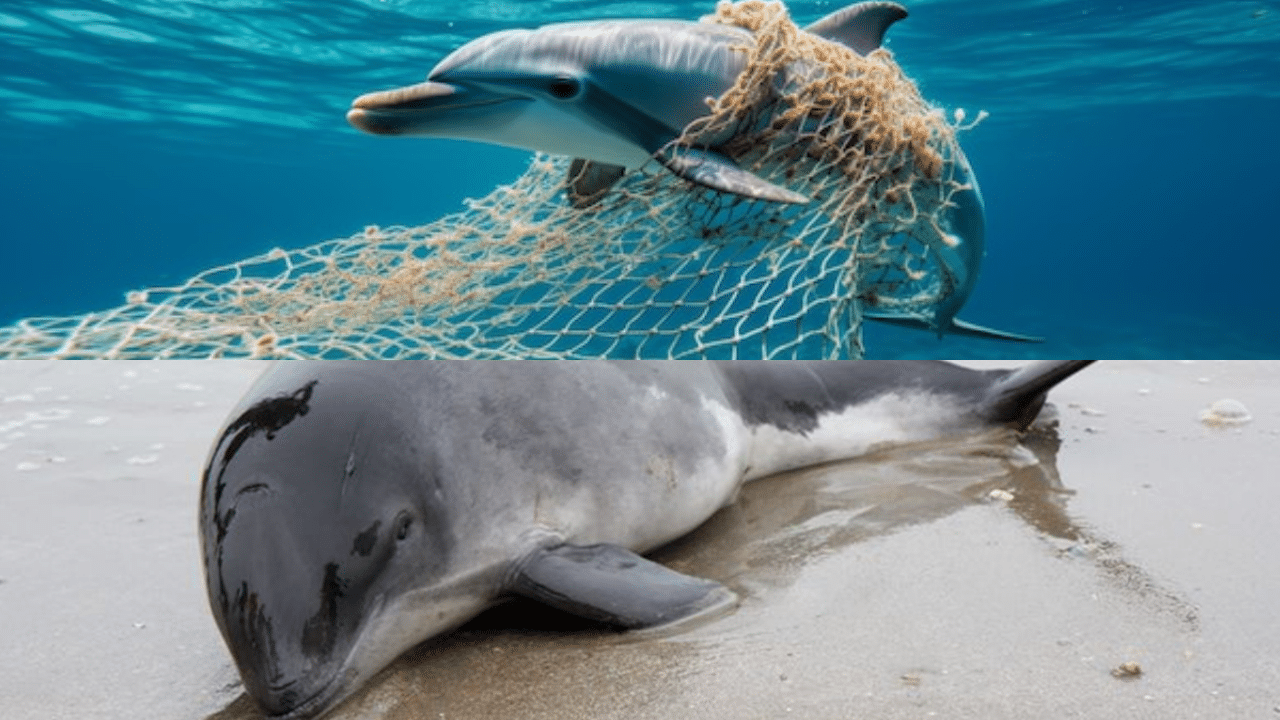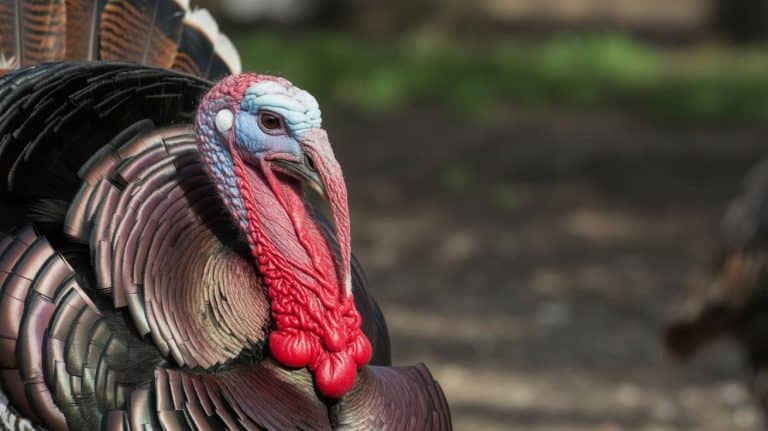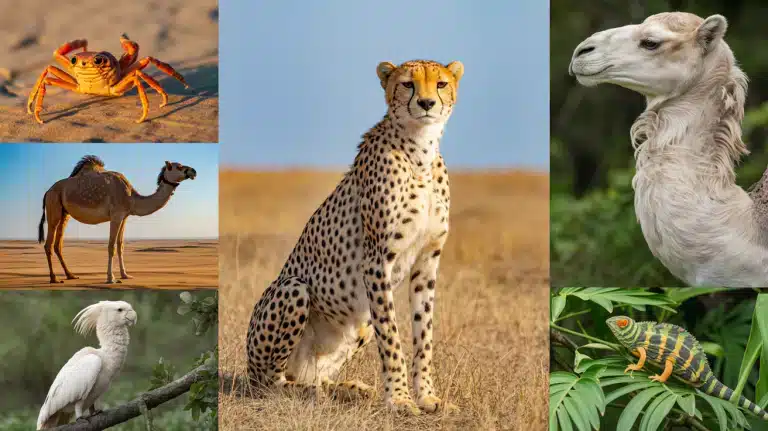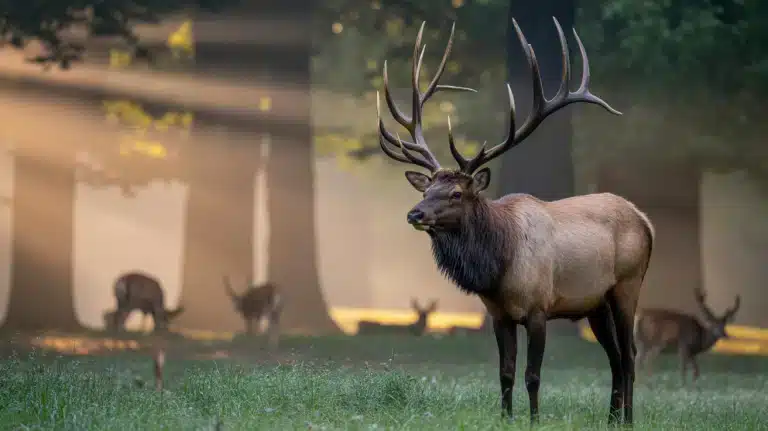Ever wondered why that sleek marine mammal you spotted wasn’t what you thought? Millions mistake porpoises for dolphins (and vice versa) every year.
These remarkable ocean dwellers share striking similarities but possess key differences that set them apart.
In this visual showdown, we’ll settle the porpoise vs dolphin debate once and for all.
You’ll learn exactly what features to look for, from distinctive fin shapes to body proportions that will make you an instant expert at identification.
Get ready to impress your friends with your newfound marine knowledge as we compare these charismatic cetaceans side by side.
Understanding Key Differences
Beneath the surface lies a world of distinctions that separate these often-confused marine mammals, from physical features to social behaviors.
Porpoises
Porpoises are small, toothed whales belonging to the Phocoenidae family.
These marine mammals inhabit coastal areas and shallow seas primarily in the Northern Hemisphere.
There are only seven recognized porpoise species worldwide. Porpoises typically prefer cooler waters and often stay closer to coastlines, feeding primarily on small fish and squid.
Known for their shy and elusive nature, porpoises generally avoid boats and human interaction.
They typically travel alone or in small groups of 2-4 individuals. Porpoises are relatively quiet compared to dolphins, producing fewer vocalizations at higher frequencies often beyond human hearing range.
| Porpoise Overview | Details |
|---|---|
| Lifespan | 8-12 years (up to 20) |
| Swimming Speed | Up to 12 mph |
| Diving Ability | 200-500 feet depth |
| Breeding | Single calf every 1-2 years |
| Gestation | 10-11 months |
| Maturity Age | 3-4 years |
| Conservation Challenges | Fishing nets, habitat loss |
Dolphins
Dolphins belong to the Delphinidae family with over 40 species identified worldwide.
They inhabit nearly every ocean and many major river systems, demonstrating remarkable adaptability across environments from deep oceans to freshwater rivers.
Known for their high intelligence, dolphins maintain sophisticated social structures with long-term bonds in pods ranging from a few individuals to thousands.
They’re highly vocal, using an extensive repertoire of communication sounds, and notably playful around humans, often approaching boats and displaying acrobatic behaviors.
| Dolphin Overview | Details |
|---|---|
| Lifespan | 20-60 years (species dependent) |
| Swimming Speed | Up to 25 mph (some species 35+ mph) |
| Diving Ability | 500-1000+ feet depth |
| Breeding | Single calf every 2-3 years |
| Gestation | 11-17 months |
| Maturity Age | 5-12 years |
| Special Abilities | Echolocation, tool use in some species |
More Comparison Images of Porpoises and Dolphins
A visual guide to spotting the differences between these remarkable marine mammals at a glance.
Dorsal Fin Comparison
The most reliable identification feature – triangular vs curved silhouettes
Face Structure
Blunt, rounded face vs elongated beak – a defining difference
Body Size and Shape
Compact, robust build vs sleek, elongated profile
Conservation Status
As human activities expand across oceans globally, dolphins and porpoises face mounting challenges that threaten their long-term survival.
Threats Facing Both Marine Mammals
Porpoises and Dolphins face similar threats worldwide, with fishing gear entanglement being the leading cause of mortality.
Other significant threats include:
- Fishing Gear Entanglement: The leading cause of death for both porpoises and dolphins worldwide.
- Habitat Degradation: From coastal development and pollution affecting their living areas.
- Chemical Contamination: From agricultural runoff and industrial discharge poisoning their food supply.
- Ocean Noise Pollution: Disrupting communication and navigation systems essential for their survival.
- Ship Strikes: From increasing maritime traffic, causing direct physical harm.
- Climate Change: Altering prey distribution and habitat conditions they depend.
Conservation Efforts and Success Stories
Despite these challenges, several conservation initiatives show promise:
- Fishing gear modifications, including acoustic deterrents (pingers) and alternative gear types.
- The California harbor porpoise recovery following gillnet regulations.
- International agreements like CITES and the Marine Mammal Protection Act.
- The Eastern Pacific gray whale’s successful recovery from commercial whaling.
- Increased public awareness through ecotourism and education campaigns.
How to Support Conservation
Your daily choices can significantly impact dolphin and porpoise survival. Select seafood with dolphin-safe certifications and reduce single-use plastics that often end up as harmful marine debris.
Support conservation organizations through donations or volunteering, and practice responsible wildlife viewing by maintaining proper distances.
Speak up for stronger marine protection policies with your representatives and reduce your carbon footprint to mitigate climate impacts on ocean ecosystems.
Conclusion: What You Now Know
Now you’re equipped with the visual intel to distinguish between porpoises and dolphins at a glance. These magnificent mammals may share the same waters, but their physical traits tell different stories.
Next time you’re near the coast or watching nature documentaries, you’ll spot the differences immediately no marine biology degree required!
The rounded fins, smaller stature, and shy nature of porpoises contrasted with the curved dorsal fins, larger bodies, and playful antics of dolphins create a clear picture for identification.
Which of these amazing creatures captivated you more? Drop a comment below with your favorite porpoise or dolphin fact, or share your own spotting story.
Frequently Asked Questions(FAQs)
Are Porpoises and Dolphins the Same Animal?
No, they belong to different families with distinct physical traits, behaviors, and habitats despite their similar appearance.
How Can I Tell a Porpoise from a Dolphin in Photos or Wild Sightings?
Look for the triangular dorsal fin and blunt face of porpoises versus the curved dorsal fin and elongated beak of dolphins.
Which is More Endangered, Porpoises or Dolphins?
Porpoises generally face greater conservation threats, with species like the vaquita critically endangered, with fewer than 10 individuals remaining.
Do Porpoises and Dolphins Communicate Differently?
Yes, dolphins are highly vocal with a complex repertoire of sounds, while porpoises communicate more quietly using higher-frequency clicks often beyond human hearing range.

